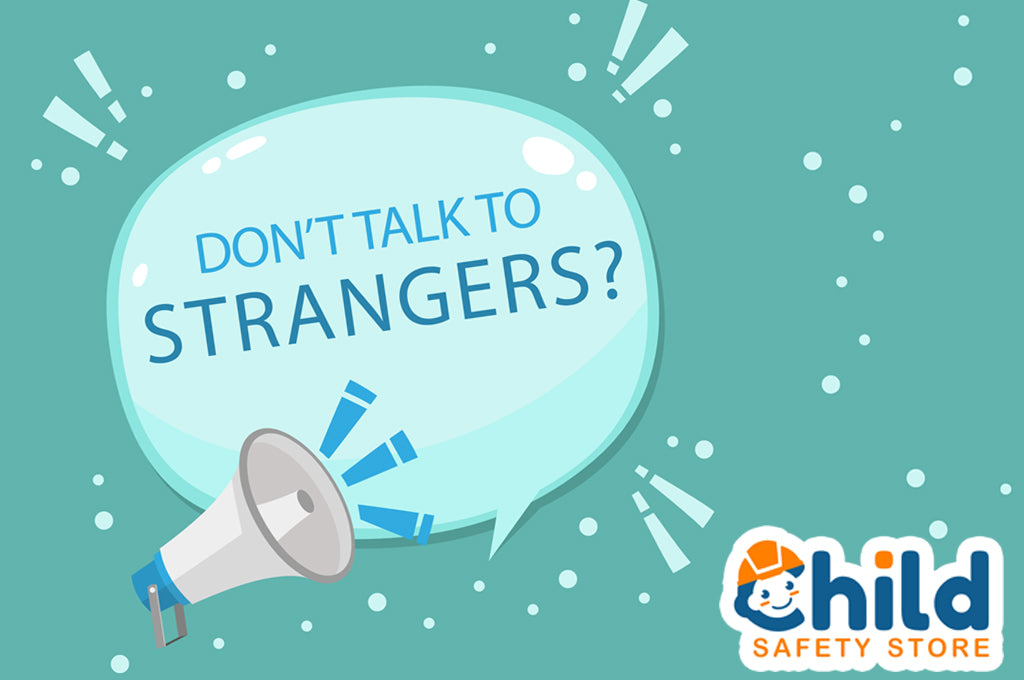
Is Don’t Talk to Strangers Still Good Advice?
The National Crime Prevention Council’s Don’t Talk to Strangers campaign used to be a mainstay of parenting. Teaching children about “Stranger Danger” was considered a great way to keep them safe. To this very day, many parents will remember these iconic ads with the kid-friendly character McGruff the Crime Dog:
First of all, let’s take a moment to realize that McGruff was much harsher than a lot of us probably remember. Now, the message of the Stranger Danger campaigns obviously came from a good place. But is “Don’t Talk to Strangers” still the best advice for children?
At Child Safety Store, we care about keeping children safe. Most of the time, we focus on preventing accidental injuries, such as falling or tipping TVs. But today, let’s take a look at the relevance of “Stranger Danger” in our current society.
The Problems With “Don’t Talk to Strangers”
The message of these ads was usually quite simple. They aimed to prevent kids from finding themselves in a menacing scenario, such getting into a stranger’s car. These tragic events do occur, but simply teaching kids not to talk to strangers really limits the scope of their protection. Stranger Danger also ignores the very real threat of an abductor that the child already knows. It’s true: in most child abduction scenarios, kids are taken by a person that isn’t a stranger. This can include neighbors, trusted friends or even family members.
It Ignores GOOD Strangers Who Can Help
A major hitch in the Stranger Danger plan is that it only teaches children what not to do. This is not an actionable plan. Sure, sometimes simply saying “no” and walking away can diffuse a situation… but what if it doesn’t? A child who is in an unfamiliar space needs to know who they can reach out to for assistance.
Ideally, kids will learn to ask for help from “trustworthy” strangers such as police officers. All of this can be confusing for children. The best advice is to change the way we discuss Stranger Danger. Specifically, this means that we should consider altering the language we use.
Instead of presenting specific scenarios that may or may not occur, teach your child to identify potentially dangerous situations. Above all, you’re looking to build those self-preservation instincts. When something feels “not right,” they should know to get out of the situation quickly and tell an authority figure. Once they find a trusted adult, it’s important for them to simply state the basic facts and not get caught up in their emotions.
What Should You Teach Instead?
To further illustrate important changes to the Don’t Talk to Strangers method, be sure to check out Kidsmartz.org. Kidsmartz is a program that is presented by the National Center for Missing & Exploited Children.
According to the official Kidsmartz website, parents should try using the following language when talking to their children about abduction prevention:
- Don’t say: Never talk to strangers.
-
Say: You should not approach just anyone. If you need help, look for a uniformed police officer, a store clerk with a nametag, or a parent with children.
- Don’t say: Stay away from people you don’t know.
-
Say: It’s important for you to get my permission before going anywhere with anyone.
- Don't say: You can tell that someone is bad just by looking at them.
- Say: Pay attention to what people do. Tell me right away if anyone asks you to keep a secret, makes you feel uncomfortable, or tries to get you to go somewhere with them.
Obviously, talking to your children about safety issues such as these is a complicated issue. Keeping children safe requires constant attention to detail. The advice above is a great, more contemporary, place to start. For further information, take a look at KidSmartz’s full list of Parent Tips.
